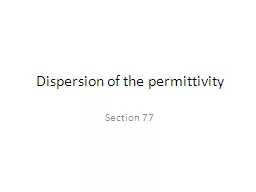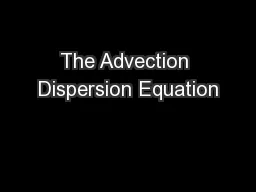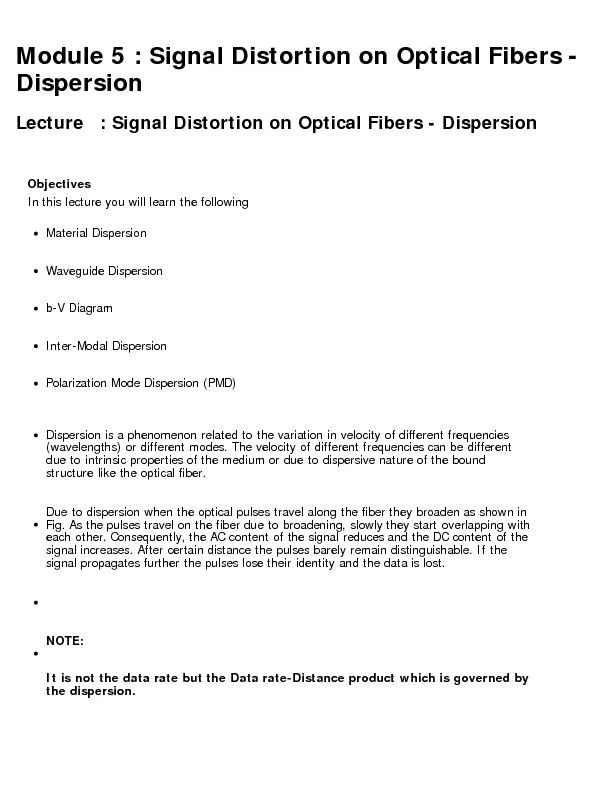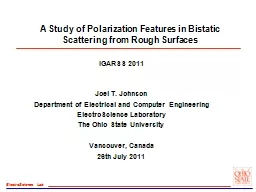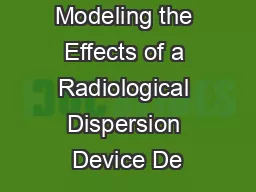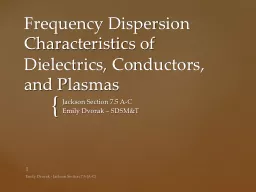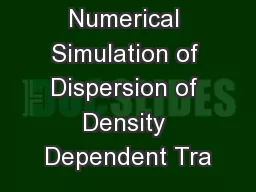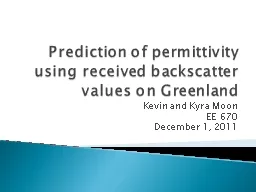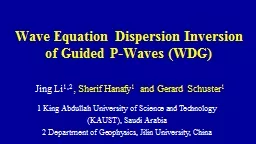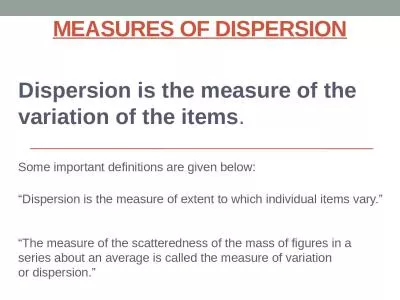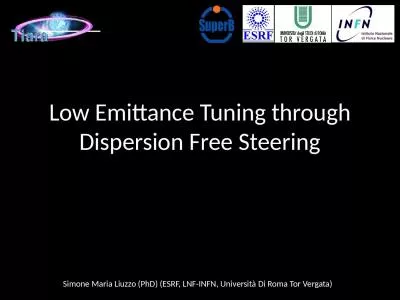PPT-Dispersion of the permittivity
Author : jane-oiler | Published Date : 2018-09-22
Section 77 Polarization involves motion of charge against a restoring force When the electromagnetic frequency approaches the resonance frequency new physics appears
Presentation Embed Code
Download Presentation
Download Presentation The PPT/PDF document "Dispersion of the permittivity" is the property of its rightful owner. Permission is granted to download and print the materials on this website for personal, non-commercial use only, and to display it on your personal computer provided you do not modify the materials and that you retain all copyright notices contained in the materials. By downloading content from our website, you accept the terms of this agreement.
Dispersion of the permittivity: Transcript
Download Rules Of Document
"Dispersion of the permittivity"The content belongs to its owner. You may download and print it for personal use, without modification, and keep all copyright notices. By downloading, you agree to these terms.
Related Documents

